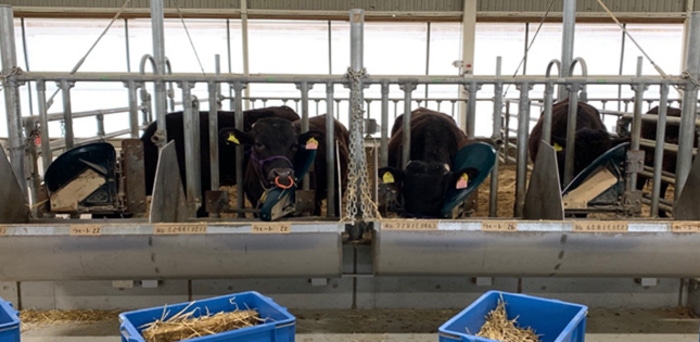Study explores physiological changes in Japanese Black during feeding
Rumen fermentation characteristics showed high propionate and low butyrate levels during the late fattening phase.
March 31, 2022

Researchers have uncovered more about the physiological changes undergone by Japanese Black cattle during the feeding process. Their discovery paves the way for easier evaluation of cattle's metabolic status, hopefully leading to the production of higher quality meat.
Meat from Japanese Black cattle is renowned for its tenderness and well-marbled-texture. Japan maintains a special feeding system to improve the amount of intramuscular fat and boost marbling. Calves are grown for 8 to 10 months before undergoing a fattening stage for 20 months. At approximately 30 months of age, the cattle are slaughtered. This gives Japanese Black cattle a distinct physiology.
Professor Sanggun Roh from Tohoku University's Graduate School of Agricultural Science worked alongside the Hyogo Prefectural Technology Center of Agriculture, Forestry and Fisheries to evaluate the metabolic and nutritional conditions in Japanese Black cattle. To do so, they adopted specific physiological parameters such as blood metabolites, hormones, amino acids, rumen fermentation and liver transcriptomes. They collected samples from early, middle and later fattening periods.
They discovered that blood triglyceride, non-esterified fatty acid concentrations, and blood insulin levels increased during the fattening phases, whereas blood ketone levels decreased. Rumen fermentation characteristics showed high propionate and low butyrate levels during the late fattening phase.
The expression levels of genes related to glucose metabolism such as SESN3, INSR, LEPR and FOXO3 were downregulated in the late fattening phases, and the related lipid metabolism, such as FADS1 and FADS2, were also downregulated.
"Our findings suggest that the physiological variations resulted from changes in energy content and composition of diets," says Roh. "The liver metabolism changed with changes in fat metabolism, whilst insulin was shown to play an important role in the physiological changes in Japanese Black cattle."
Roh believes he and his colleagues demonstrated that blood metabolites and liver transcriptomes can be used as parameters to determine the metabolic and nutritional conditions of Japanese Black cattle. This, in theory, could be employed to measure the metabolic status of the cattle and be utilized to produce superior meat.
Source: Tohoku University, which is solely responsible for the information provided, and wholly owns the information. Informa Business Media and all its subsidiaries are not responsible for any of the content contained in this information asset.
You May Also Like



